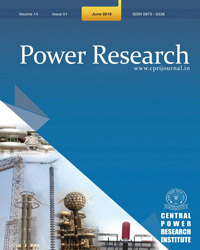Thermal and dielectric performance of melt processed polycarbonate /CaCu3Ti4O12 composites
Subscribe/Renew Journal
Composites comprising Polycarbonate (PC) and CaCu3Ti4O12 (CCTO) were fabricated via melt mixing followed by hot pressing by employing both micron (1-7μm) and Nano (75-100 nm) sized crystallites of CCTO. Both the micro and nano CCTO powders were self-synthesized using solid state and co-precipitation routes respectively. These were characterized using X-ray Diffraction (XRD), Thermo Gravimetric (TGA), Differential Scanning Calorimetry (DSC), Scanning Electron Microscopy (SEM),Impedance analyzer for their structural, morphology and dielectric properties. Nanocomposites inducted with nCCTO-50 wt% exhibited better thermal stability than that of pure PC and composite embedded with micron sized CCTO. However, there was no significant difference in the glass transition (Tg) temperature between the polymer and the composites. The Nano composites (PC+nCCTO-50 wt%) exhibited 2.5 times higher permittivity values as compared to that of composites having 50 vol% micron sized CCTO crystallites.
Keywords
Polycarbonate (PC); CaCu3Ti4O12 (CCTO); Composite; Thermal, Dielectric Properties
User
Subscription
Login to verify subscription
Font Size
Information

Abstract Views: 264

PDF Views: 0



